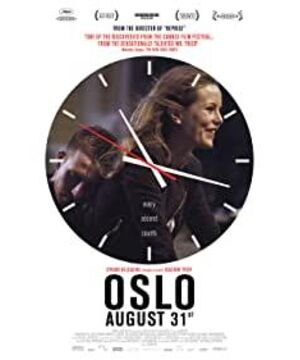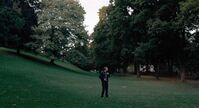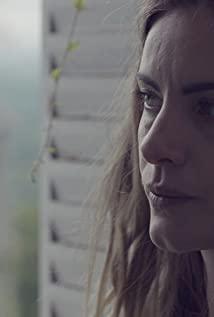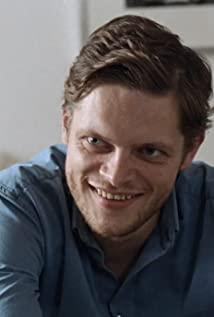Five years after the great success of his debut "Encore", Joachim Thiel created his second work, which suddenly turned from the wild and unrestrained youth turmoil to a despairing and sentimental atmosphere. It is also a story about young Norwegians. This work is obviously more empathetic than the debut , thanks to the excellent performance of the actor Anders Danielson Lee , but also this classic adaptation . "Oslo, August" was adapted from the novel "Inner Fire" by French writer Pierre-Drieux La Rochelle. Thiel 's admiration for French films has been revealed since his debut. The tragic and joyful love in "Ensemble" is reminiscent of Truffaut 's "Ancestor and Zhan", and various bold and arbitrary editing techniques undoubtedly pay tribute to Godard . Not only does this take directly from a New Wave director's script, but the protagonist's 24-hour search for meaning in life echoes New Wave grandmother Varda 's Cleo from Five to Seven, not to mention the French-inspired title. Director Assayas ' "My Love Forgotten in Autumn" (original title: late August, early September), the last day of August symbolizes the end of summer, and this story also symbolizes the end of a life.
The film tells the story of a day when a drug addict rejoins society after detoxification. From the beginning, the hero's attempted suicide scene has been branded with a tone of despair and sadness , but the director Till used various plot twists and character relationship descriptions to create illusions and throw optimistic hopes. So it doesn't feel like some kind of sullen, gloomy work. The protagonist is ready to start a new life, but finds that his family, friends, and even the whole society has changed. He finds that he can't deal with it as easily and confidently as in the past. A casual remark or question will hurt his self-esteem, and he has to choose the way of ridicule and contempt. To fight back, or even repeat the same mistakes and become addicted to drugs. On the surface, this seems to be a personal psychoanalysis drama . The plot depends entirely on the evolution of the hero's inner emotions, but at the same time, its core has a sharp realistic meaning : how should the once misstepped youth adjust their mentality and rejoin the society? How should society accept reformed addicts? These are all quite thorny issues, especially in Norway, which is a highly developed economy and a socially tolerant country. This portrayal is tantamount to tearing the stereotyped and perfect screen image of this Nordic country.
Actor Anders Danielson Lee 's expressions, actions and inner drama are quite brilliant, and it is easy for people to substitute for his identity dilemma . Emotions such as complaining, self-doubt, hope, vulnerability and anger are all expressed in him and his family. Talking with friends, or wandering silently in the city. Director Till's label-style editing method comes into play again. The narration and the plot are dislocated. The camera occasionally aims at a stranger on the road, and uses a beautiful montage to quickly show his/her life fragments; even when the male protagonist falls into memory and contemplation , assigning his identity to a passerby. This kind of perspective -changing narrative interestingly combines the fictional characters written by the novelist with random passers-by in real life in "Encore", so that the two layers overlap; in this work, this method highlights the The protagonist tries to get rid of/jump out of his own identity , to see the world and rebuild his life from the perspective of others, so he becomes a bystander of his own life, not the protagonist . This narrative is repeated in the heroine of "The Worst Man in the World," who made similar remarks when she broke up with her boyfriend, directly stating that she was in crisis.
Existential thinking in this unique approach fits with the themes of identity in this trilogy : a genius writer who hesitates between fame and love, a rehabilitated drug addict, and a young man who doesn’t know what he wants Woman, the director's trilogy all unfold intriguing stories around the identity crisis of youth. This work also consciously paints the city. The old video records at the beginning are enough to show the director's ambition. The narration is accompanied by different people's impressions and words of Oslo, and the building that collapsed in the gaze of the crowd It evoked sad memories of the past, and cleverly took up the topic of " memories " in the trilogy. As the protagonist comes out of the drug rehab center and reconnects with his family and friends, memories of past events continue to emerge.
This plot is similar to the plot in which the actor played by Anderson in "Encore" reunites with his partner after he comes out of the hospital, but instead of relying on the superposition of montages, it uses empty shots of the city landscape: highways, trams , swimming pools, roads, parks. The public places that these protagonists have visited or witnessed are themselves part of the memory , poetically connecting them to the city. Since the narration only happens in one day and one night, Till reduces the use of means of interrupting the linearity of time and space. Compared with the large number of punk rock music in "Ensemble", this time he prefers ambient music and electronic music . This soundtrack style matches well With the slow rhythm of the narrative, Till accurately shows the psychological changes of the characters to the audience, leaving an intriguing impression in the empty shots without dialogue.
View more about Oslo, August 31st reviews









